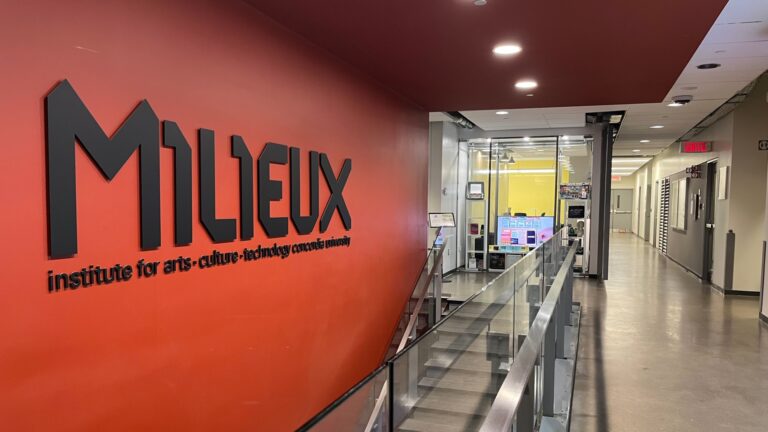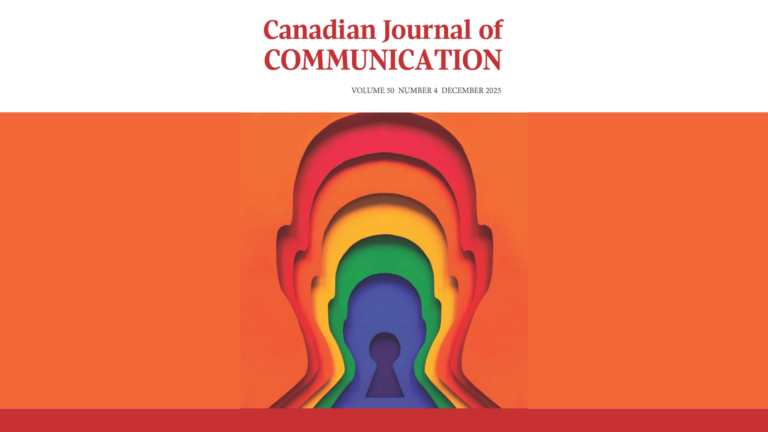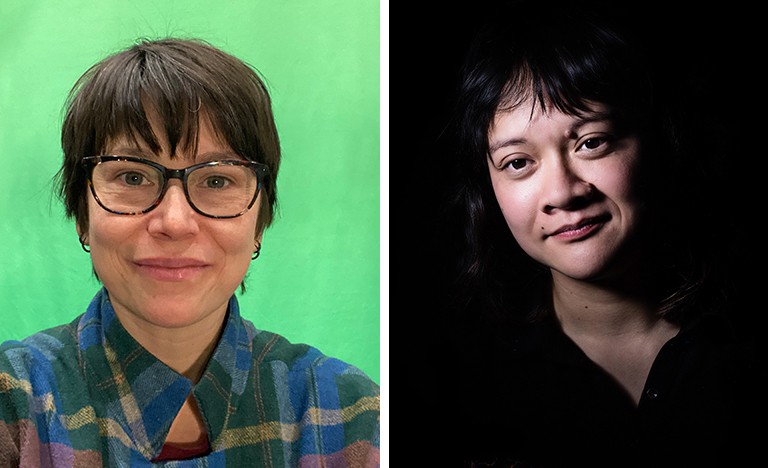Luiza Helena Guimarães connects the world of art and science through virtual reality (VR) experiences. She brought this experience to Concordia University last fall at the Milieux Institute’s Immersive Reality Lab.
Guimarães is a Brazilian artist-researcher, performer, entrepreneur, creator, screenwriter and director of immersive media. At her talk, the artist allowed participants to explore the brain through virtual reality in her art piece titled Computational Spectra_fulldome (EC360/II).
For Guimarães, the relationship between humans and machines is redefining cognition, and she uses VR and AI robotics to explore this relationship.
In the virtual experience presented at Milieux, the viewer uses VR headset and controllers to step into her immersive art piece, where she has created a representation of neuro-feedback through 3D graphics. Guimarães sees the viewer — the person immersing themselves in the virtual environment — as a performer while engaging with the experience.
The spectator is presented with a choice of four different frames while in the virtual experience, and they are positioned in the midst of a large grey room. Each frame transports the user to a synaptic zone that depicts a different emotion. Each zone has a certain colour, and each colour has a unique wave frequency, as defined by the scientific link between colour and emotions. The wave frequencies influence the audio the spectator hears.
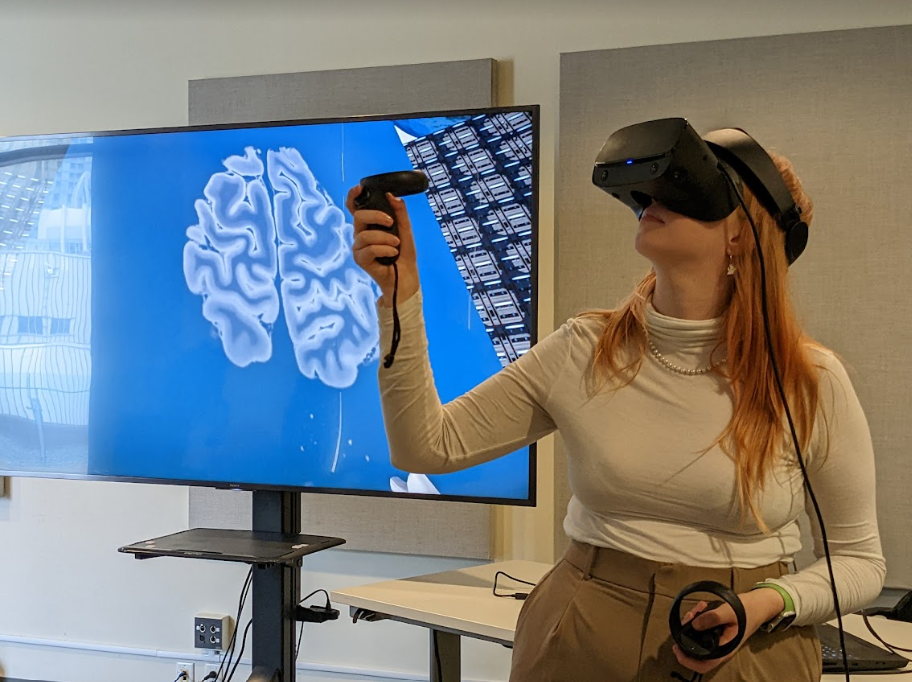
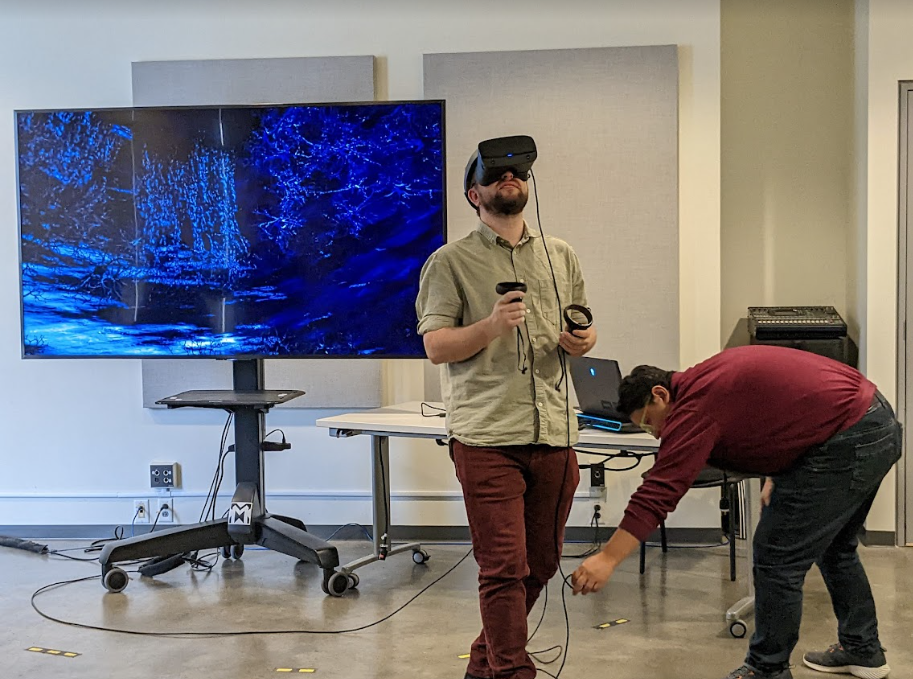
“In daily life, we encounter different sound frequencies, and our brain tends to adapt to these frequencies. It runs the same frequency of sound that we encounter,” explained Guimaraes.
Before working with VR, Guimarães worked with painting and performance art. However, she was interested in immersive technologies that create full experiences, which led her to work with 360 panoramas and full-dome experiences, which naturally led her to virtual reality. VR provided an avenue for making immersive experiences more accessible to a broader audience.
Guimarães explained that VR is the most immersive and challenging media out there. The technology of VR is challenging for the artist because they have to recreate entire environments to make the viewer feel like they are fully immersed.
This includes trying to create the impression there is depth when there is not. Guimarães described that when we perceive virtual reality, the image first reaches the retina of our eye, and then is processed by the more instinctive parts of our brain. This process happens in a matter of milliseconds. Therefore, the artist must create depth to make the user feel like she is inside a new environment or experience.
Guimarães is inspired by two major correlated strands that are causing global emergencies. The first strand is related to the Anthropocene and the global environmental crisis, and the second strand is related to cognition and the redefinition of humans through modern technology such as neural immersive cinema, AI robotics and brain-computer interfaces.
She believes that art and life are intermingled. In her new work, she hopes to demonstrate how art, culture and society are related. She explained that culture only represents what is on the surface — what we can all see — and artists are the interface with the world, who can reveal what’s hidden.
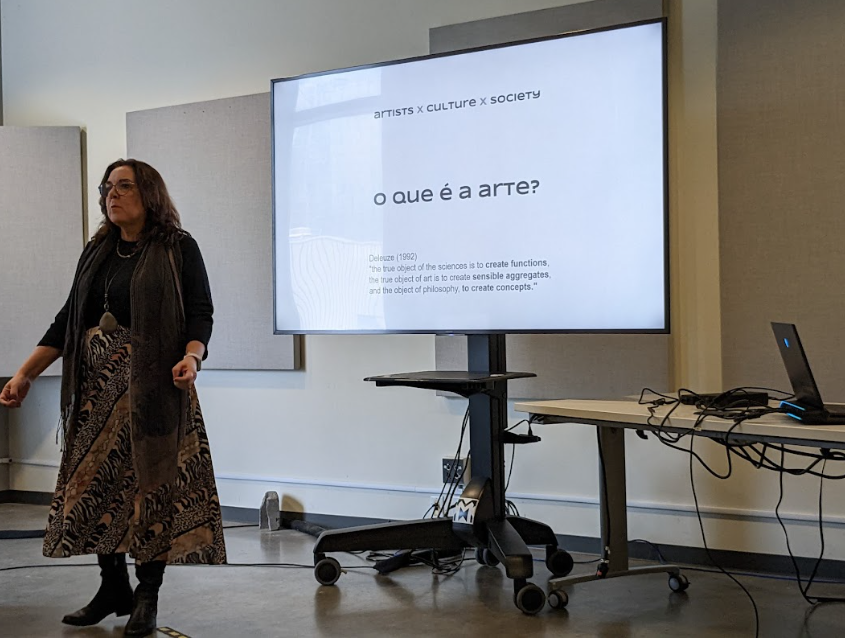
But for Guimarães, the art she creates in VR goes beyond perception and allows those who experience it to reach a deeper understanding. Guimarães seeks to change our understanding of art as a form of knowledge. Artistic experiences can change our knowledge, and our relation to the world, and thus how we affect the world. Virtual reality enhances the ability of art to affect the world because it can change our perceptions, which can change our perception of the world and how we affect it. Guimarães wishes to create this kind of “affective field” that can change people and how they relate to the world. The affective field creates sensations that can provide healing to us and the planet.
Through the integration of artistic and scientific knowledge, VR technology broadens the possibilities for artistic expression and enables the creation of immersive settings that deepen our awareness of culture and the wider world.
By: Abby Cole, MA student in Digital innovations in Journalism at Concordia University

